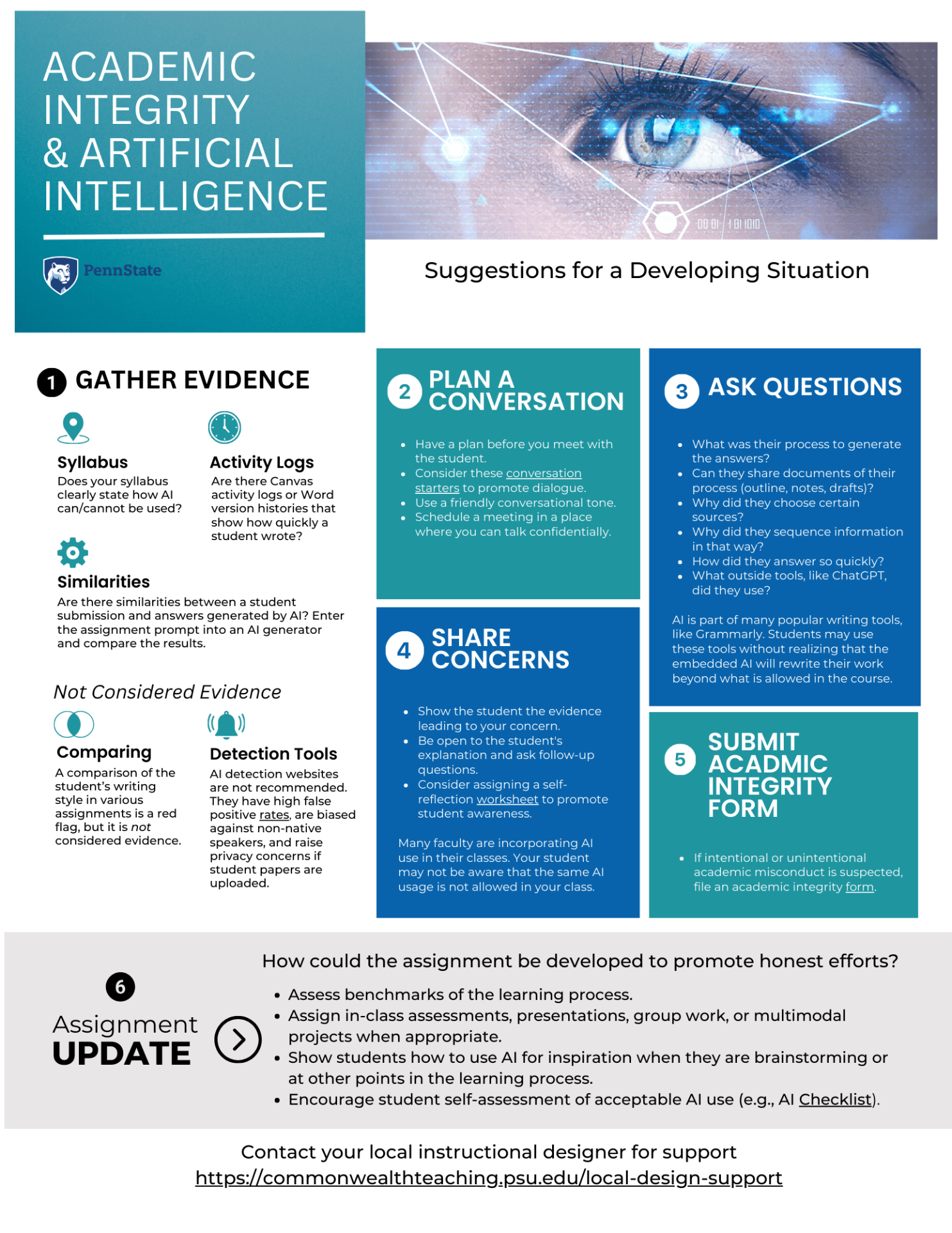ChatGPT and other large language model platforms have made artificial intelligence for writing easily accessible to all. In the semesters since the release of ChatGPT, concerns have grown about academic integrity in the age of artificial intelligence. There are instructors who have shared that they have suspected that their students have used artificial intelligence to write their assignments. Being thrust into this situation can be difficult because we do not have great options for AI detection in writing. There are some detection tools available, but there are known issues with detection tools giving false positives.
Any situation involving suspected violation of academic integrity is difficult. With the growing use of AI, we wanted to share a quick guide on how you might approach a conversation about academic integrity if you do find yourself in a situation where you suspect a student has used artificial intelligence in an unacceptable way.
The quick guide below was created by our colleague Elizabeth Park, Instructional Designer at Penn State York. The steps for a approaching a situation around academic integrity violations include:
- Gathering evidence
- Planning a conversation
- Asking questions
- Sharing concerns
- Submitting the academic integrity form
The final section of the quick guide offers ideas for how to revise an assignment to help avoid future potential violations of academic integrity. These include scaffolding assignments to have benchmarks, showing students how to use AI for inspiration rather than for generating a full final product, and encouraging students to self-assess acceptable use of AI.
Check out the full infographic below. If you have questions or would like to discuss this information in more detail, please contact the Center for Educational Innovation.

Here is a link PSU AI AI Guide to open the PDF version for access to active links, use with screen readers, and printing.

